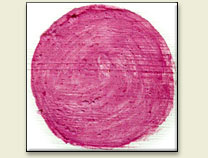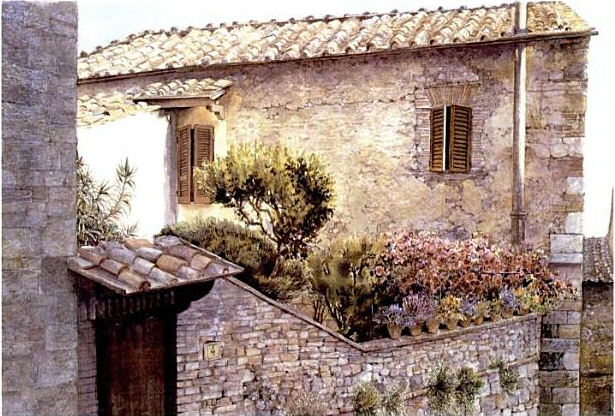
Painted swatch of Cobalt violet.
Brief description of Cobalt violet:
The first real violet pigment prepared by Salvètat in 1859. It is chemically stable, but its rather high cost and low tinting power prevented its wider use in paintings. Not unlike its older sister Cobalt Green, its drawbacks included high cost and weak colouring power, both of which limited its use among painters. It was quickly replaced by the cleaner, stronger pigment Manganese Violet.
Names for Cobalt violet:
| Word origin: | The name "Cobalt violet" comes from Middle High German kobolt = an underground goblin (cobalt was thought to be detrimental to silver ores). | ||||||
| Non-English names: |
|
||||||
| Origin: | artificial | ||||||
| Chemical name: | Cobalt(II)-phosphate or Cobalt(II)-arsenate |
Example of use by artists:
A violet shadow for Tuscany's stonework

Frences Shearing, A house in San Gimignano, Tuscany, watercolour
Cobalt violet was used with cerulean, permanent mauve and Naples yellow for most of the stonework in the painting. Its pinkish undertone gives a warm delicacy to the texture of the stonework.

